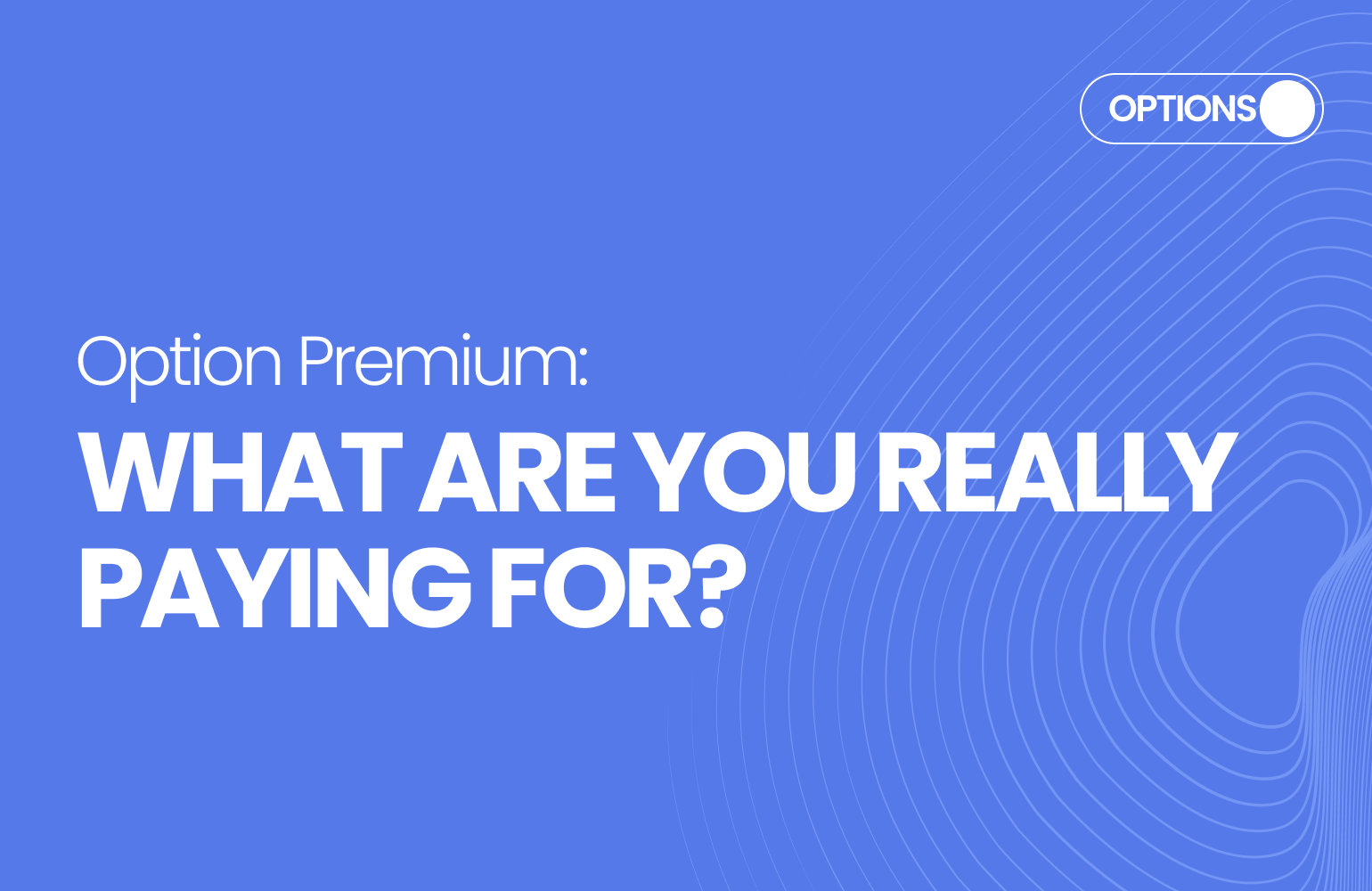Key Takeaways:
- Premium = Intrinsic + Extrinsic value
- Influenced by strike price, time to expiry, volatility, and demand
- Defines breakeven points, risk exposure, and profit potential
What Is an Option Premium in Crypto?
An option premium is the price paid by the buyer to the seller for the rights granted by the option contract. It’s quoted per unit of the underlying asset.
For cryptocurrency options:
- BTC options are priced in USDT or USD per BTC
- If you buy 1 BTC call with a premium of $500 → you pay $500 to open that position
Buyer vs. Seller
- Buyers pay the premium upfront and have defined risk (max loss = premium paid)
- Sellers receive the premium upfront but face potentially unlimited risk (especially in naked calls)
Key Point: The premium is non-refundable, regardless of whether the option is exercised.
Components of an Option Premium in Cryptocurrency
The option premium consists of two parts:
1. Intrinsic Value
- For Call Options: Intrinsic = Spot Price – Strike Price (if Spot > Strike)
- For Put Options: Intrinsic = Strike Price – Spot Price (if Strike > Spot)
- If an option is out-of-the-money (OTM), intrinsic value is zero.
2. Extrinsic Value (Time Value)
- Time to expiry
- Implied volatility (IV)
- Interest rates (minimal effect in crypto)
- Supply & demand for the contract
Extrinsic Value = Premium – Intrinsic Value
Factors That Influence Option Premium in Crypto
1. Options Strike Price
- Closer strike = higher intrinsic = higher premium
- Far OTM strike = low intrinsic = lower premium, but higher risk
2. Time to Expiry
- Longer-dated options = higher premium due to more time for movement
- Short-dated = cheaper, riskier in timing
3. Implied Volatility (IV)
- Higher IV = higher premium (market expects big moves)
- Traders must watch volatility drops post-events (IV crush)
4. Market Supply & Demand
Heavy demand before events (e.g., forks, Fed news) pushes premiums higher
5. Underlying Asset Price
- Calls increase in value when price rises
- Puts gain when asset falls below strike
Option Premium Example in Crypto
1. BTC Call Option
- Strike: $60,000
- Spot: $63,000
- Expiry: 7 days
- Premium: $500
Breakdown:
- Intrinsic Value = $3,000
- Extrinsic Value = $500 – $3,000 = $0 (all intrinsic)
ETH Put Option
- Strike: $3,200
- Spot: $3,400
- Expiry: 14 days
- Premium: $80
Breakdown:
- Intrinsic Value = $0 (OTM)
- Extrinsic Value = $80 (based on time & volatility)
Calculating Option Premium in Cryptocurrency Strategies
1. Know Your Breakeven Point
- Call Option Breakeven = Strike + Premium
- Put Option Breakeven = Strike – Premium
If the market doesn’t pass your breakeven, the trade results in a loss.
2. Sell When Premiums Are High
If IV is high and you expect it to drop:
- Consider selling options to collect premium income
- This is ideal in sideways markets
3. Buy Low-Premium, High-Leverage Bets Cautiously
OTM options with low premiums may seem attractive, but:
- They often expire worthless
- Use them only for small capital speculative trades
4. Don’t Ignore Theta Decay
Premium erodes faster as expiry approaches:
- Avoid holding OTM options too close to expiry unless expecting a big move
Understanding Crypto Option Premiums
So you’ve picked your options strike price, timed the expiry, and selected your crypto asset—BTC, ETH, or SOL. But there’s one number you can’t ignore: the option premium in crypto.
In cryptocurrency options trading, the premium is the upfront cost you pay to open a position. It’s the price of the right—not the obligation—to buy or sell an asset. But what is option premium in crypto really made of? And how is that premium calculated?
This guide will break down the components of option premium, how it interacts with strike price and volatility, and how to make smarter trades by understanding it.
Frequently Asked Questions
Why are some options so cheap?
They may be far OTM or near expiry, with low probability of turning profitable.
Can I sell an option before expiry?
Yes, you can sell it anytime in the market if its option premium in cryptocurrency rises.
Is high premium always bad?
Not always—it often signals volatility or higher reward potential.
How is option premium calculation done in crypto?
It’s based on intrinsic + extrinsic values, influenced by strike, time, volatility, and demand.
Keep Learning
What Is Options Trading in Crypto? Simple Guide for Beginners
What is an Expiry Date in Options? Explained with Examples
What are Call and Put Options in Crypto

